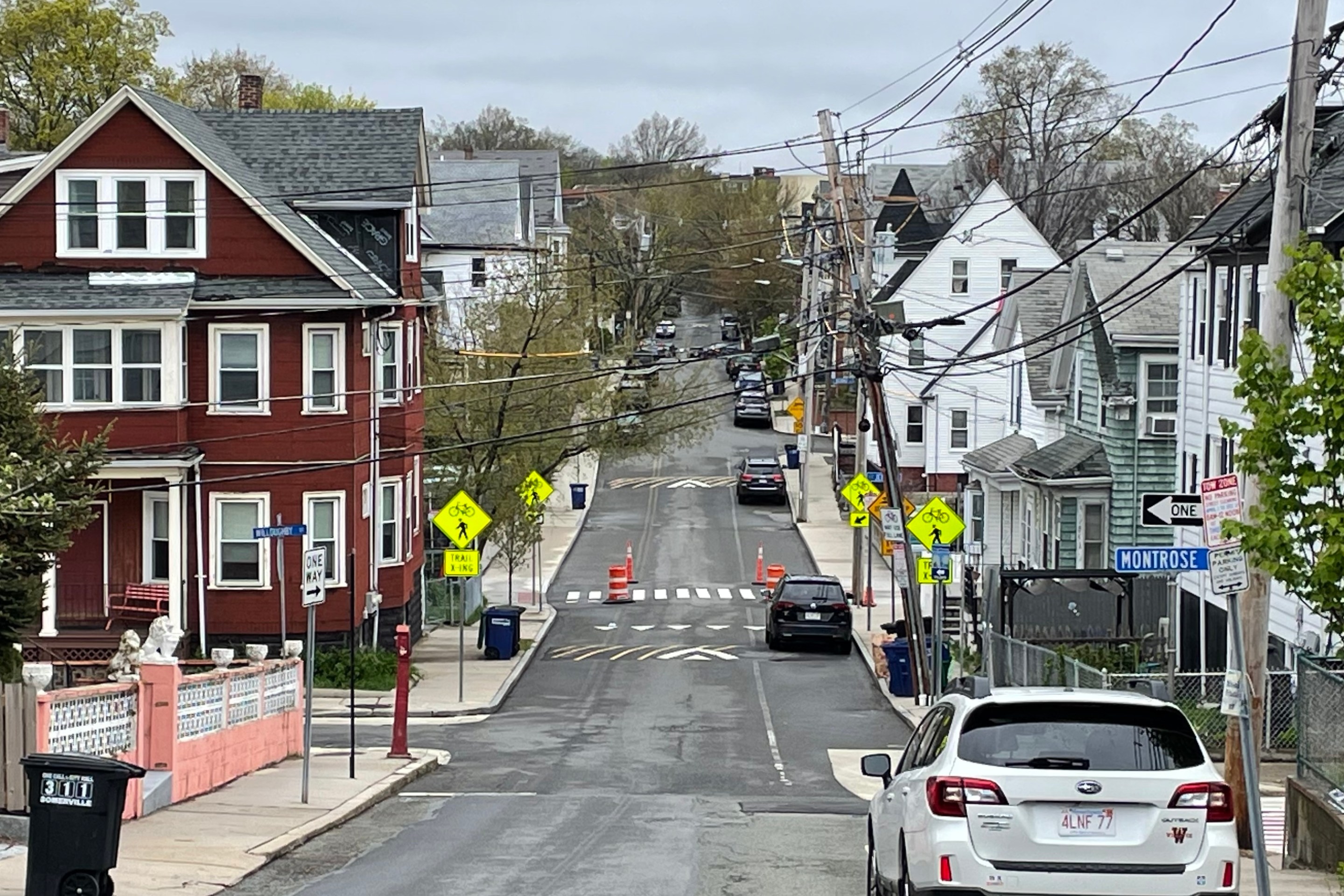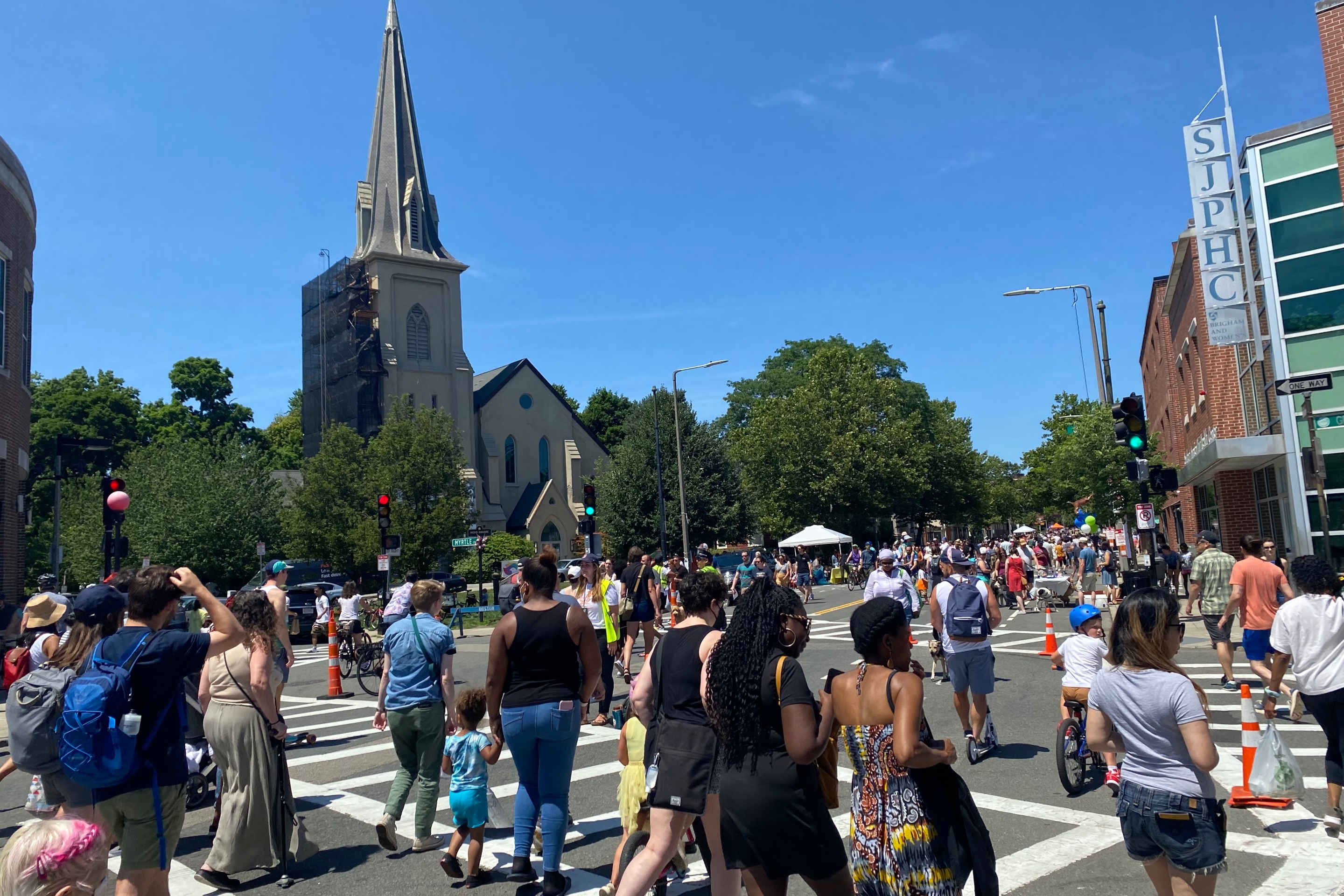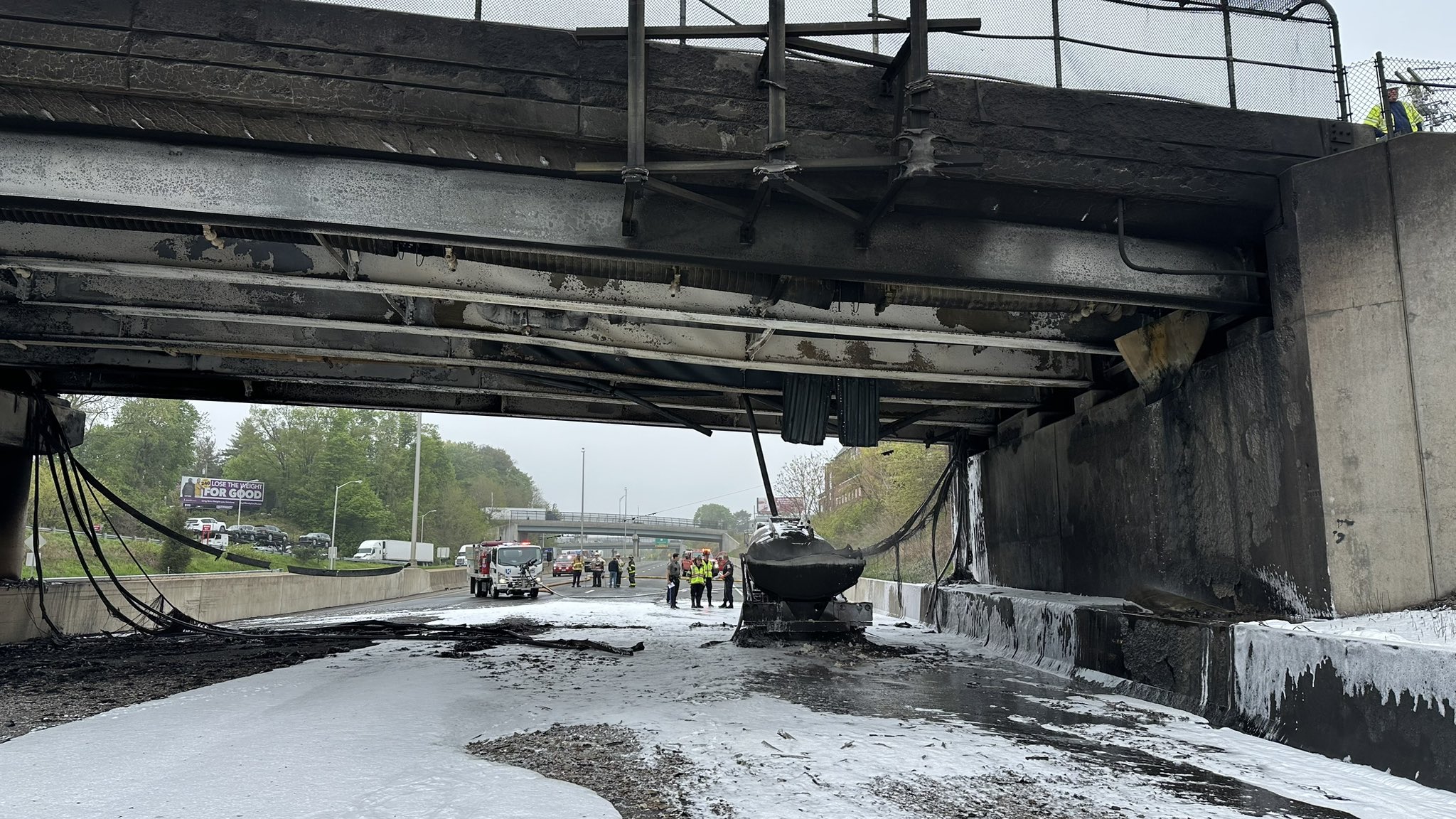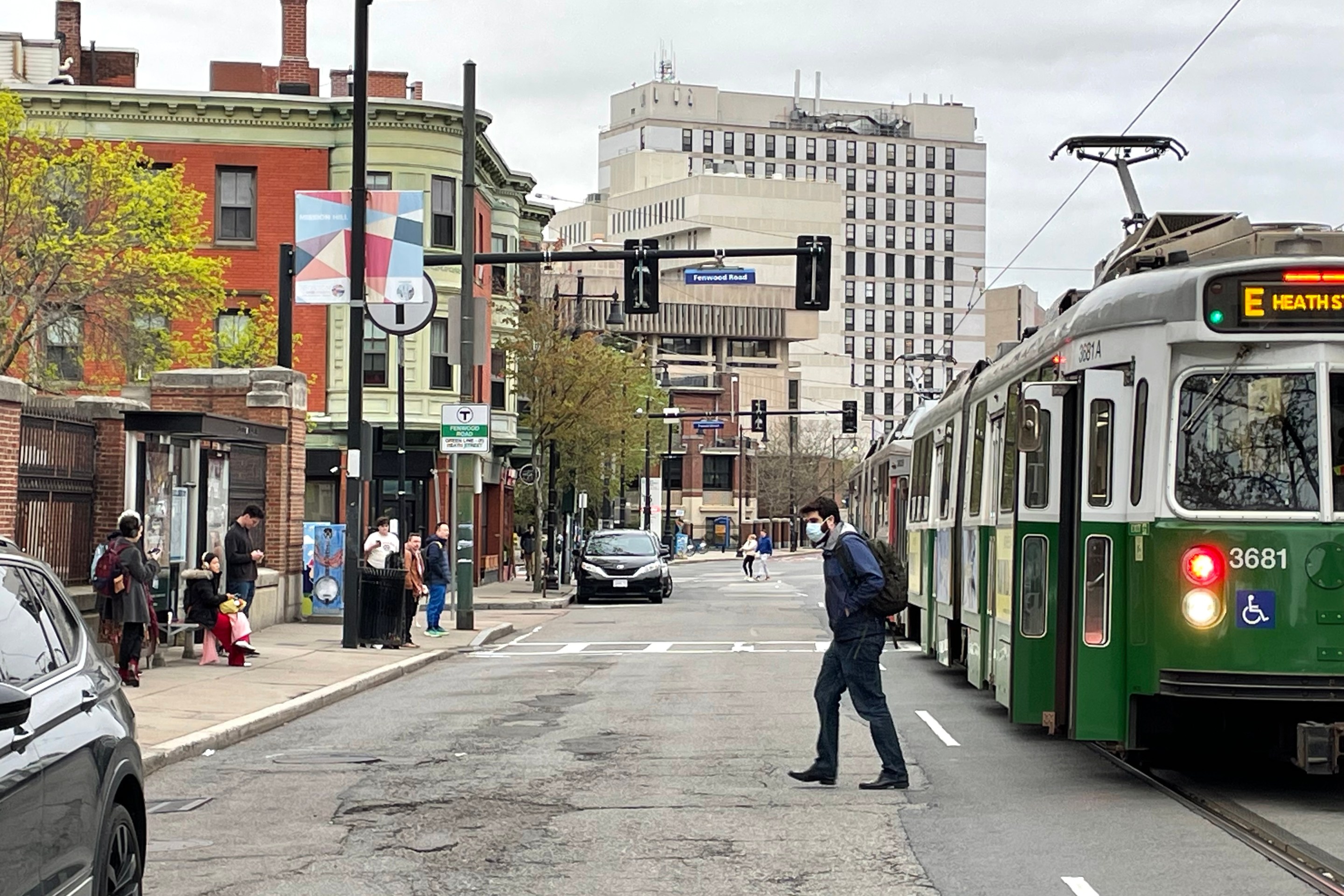Could An Infrastructure Stimulus Fund High-Speed Rail for New England?
3:31 PM EST on March 3, 2021
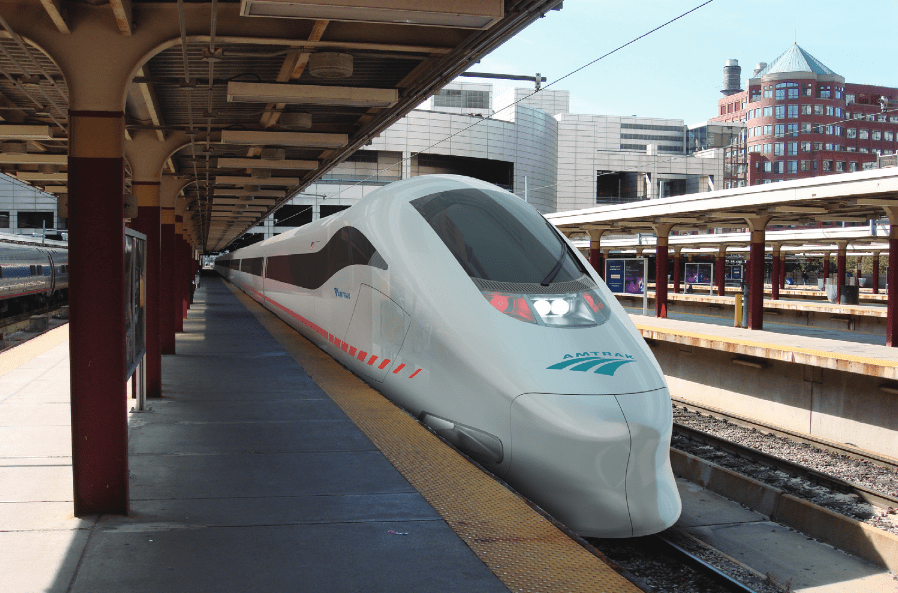
A rendering of a high-speed train at Boston’s South Station. Courtesy of Amtrak.
A growing alliance of business organizations, mayors, and transit advocates from seven northeastern states are drumming up support for major federal investment in a new regional rail network built around a new high-speed rail line between New York City, Hartford, Providence, and Boston.
The North Atlantic Rail initiative is seeking a $105 billion investment for "a rail-enabled economic transformation strategy grounded in the pursuit of environmental justice that creates one integrated market for ideas, capital, and talent across the economic geography encompassing New York City, Boston, and all of the smaller cities of New England," according to the initiative's website.
The twelve-figure price tag might seem daunting, but with the possibility of significant federal investment and partnerships among seven states, advocates think that it's within the realm of possibility.
President Biden, an Amtrak fan who promised up to $2 trillion in spending for clean energy and infrastructure projects, is expected to push an infrastructure bill soon after Congress passes a $1.9 trillion package for pandemic relief.
And Biden's Transportation Secretary, Pete Buttigieg, has said that he wants “the U.S. to be leading the world when it comes to access to high-speed rail."
North Atlantic Rail proponents argue that the $105 billion cost of their proposal would use just 5 percent of a $2 trillion infrastructure program, but it would benefit a region where 11 percent of the nation’s population lives and works.
"We’re trying to build support among the mayors and political delegation," says Jarred Johnson, a North Atlantic Rail steering committee member and the executive director of Boston-based TransitMatters.
"The part that’s getting the most attention is the high-speed rail alignment to New York City with the tunnel under Long Island Sound, but this proposal includes big upgrades to inter-city and suburban rail, too - such as Boston to Springfield," says Johnson. "We don’t want this to be just for business travelers; it’s also about better service to the suburbs, and connecting northern New England. We want to make this a broad initiative."
The proposal would be built in three phases.
Phase one, at a cost of $35 billion, would focus on projects that are already in planning, including MassDOT's East-West rail upgrades between Worcester and Springfield, upgrades to the Metro-North line between New York and New Haven, and electrification of the MBTA's regional rail system to enable rapid, all-day rail service throughout eastern Massachusetts.
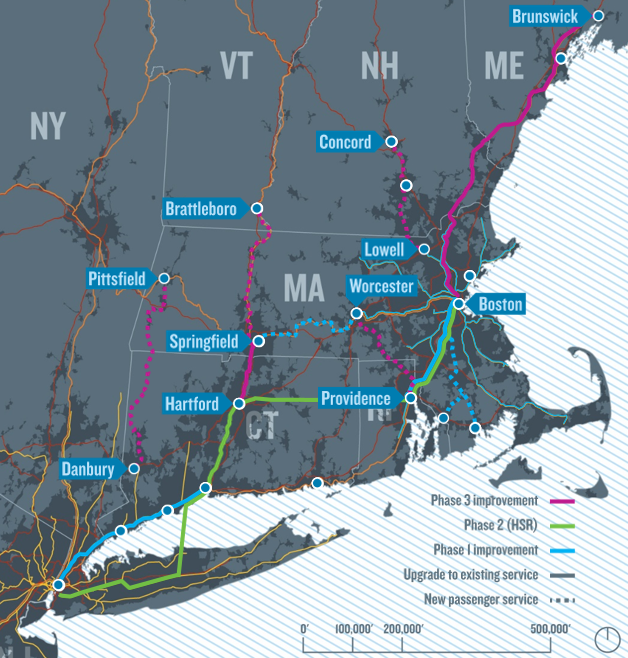
Phase two would build a 175-225 mph high-speed rail line on a new corridor between Long Island and Providence, including a new tunnel under Long Island Sound to link New York City with New Haven, Conn.
North Atlantic Rail proponents estimate that this phase would cost $50 billion to build – roughly half the estimated cost of the high-speed rail line now under construction between San Francisco and Los Angeles. However, the political and technical risks of acquiring and permitting a new rail corridor through rural Connecticut and Rhode Island could be significant.
The third and final phase, costing $20 billion, would upgrade other passenger rail lines to connect smaller cities, like Portland, Manchester, Brattleboro, and Pittsfield, into the new high-speed rail network.
In Boston, this phase would also unite the MBTA's regional rail system with funding for a new north-south rail tunnel to connect North Station and South Station.
Stay in touch
Sign up for our free newsletter
